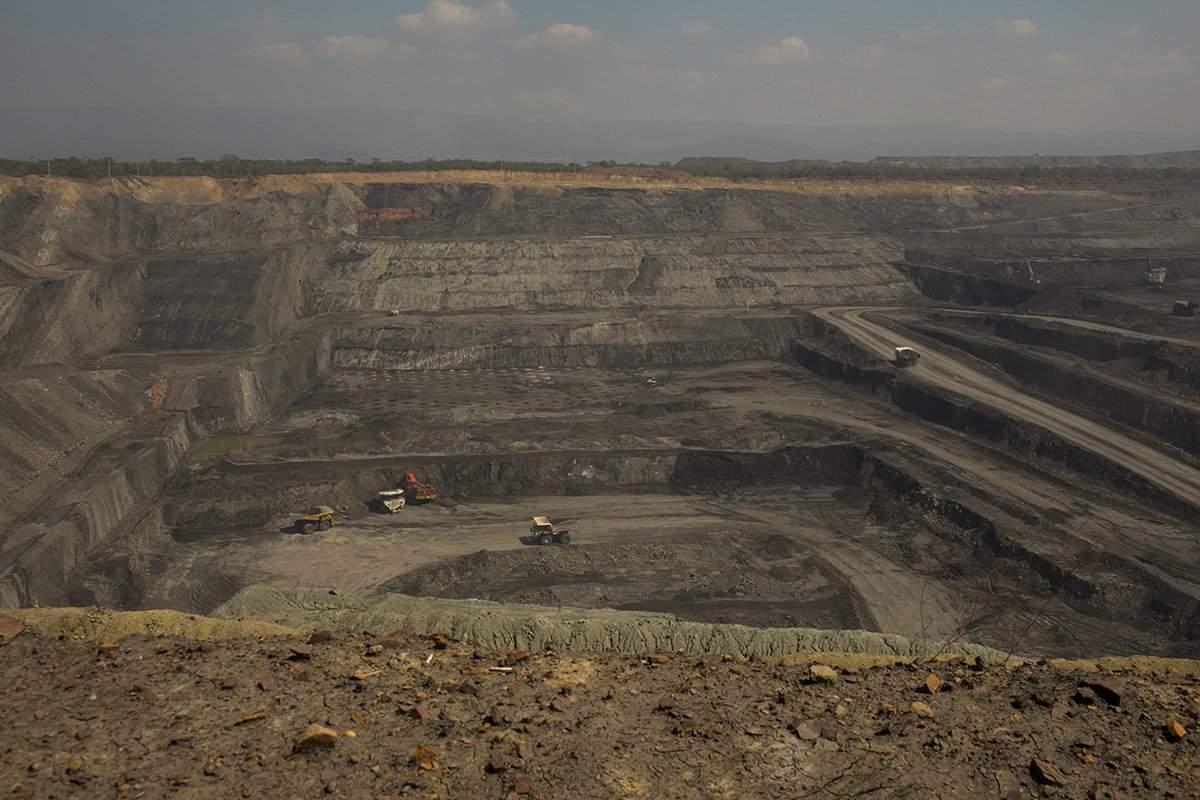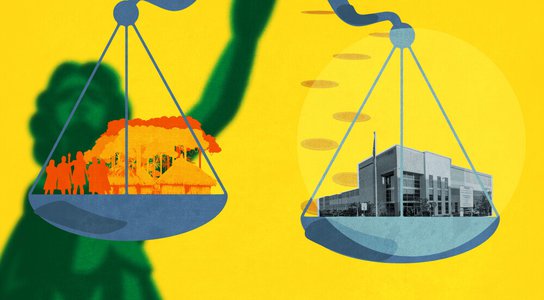Colombia’s Cerrejón mine is no stranger to scandal. One of the world’s largest open-pit coal mines, it is now the subject of new complaints filed by the Global Legal Action Network (GLAN) calling for the mine’s closure – the latest in a series of attempts to seek justice for a litany of abuses spanning decades.
The communities who live near the mine are some of Colombia’s poorest. For nearly forty years, they have been inhaling poisonous dust from the mine; their water contaminated by the toxic waste dumped in their rivers. Meanwhile, the mine’s owners – BHP, Anglo-American and Glencore – count among the richest companies in the world.
Cerrejón is a case study in corporate power left unchecked, and the devastating consequences that follow for people and our planet. New corporate accountability laws currently being debated in the European Union could help change this, by making companies liable for these sorts of abuses. But only if they are well designed and properly enforced.

Cerrejón Coal Mine in Barrancas, La Guajira, Colombia, 2019. Nicolo Filippo Rosso/Bloomberg via Getty Images
“We are paying with our lives”
Now a desert-like expanse of barren land, Cerrejón covers 690 km² - about half the size of Delhi or Cairo. Colombia’s La Guajira region is home to many indigenous and Afro-Colombian communities, who have been disproportionately affected by land grabs and forced evictions to make way for the mine site.
The video below shows how some of these people were violently forced out of their homes to make way for the mine - the scenes of a 2016 eviction in the Roche community show riot police dragging women along the ground and loading them onto trucks. This eviction was reportedly carried out using tear gas and metal projectiles, with bulldozers sent in to flatten people’s homes. Cerrejón later stated that it ‘laments what occurred on that day.’The mine is also profoundly hazardous. It emits pollutants that are invisible to the human eye but can cause a multitude of health issues, ranging from eye damage to heart disease and premature births.
The dossier of complaints filed by GLAN with the intergovernmental Organisation for Economic Co-operation and Development (OECD) last week states that over 336,000 people have developed respiratory complications that are directly attributable to the mine, with over 400 emergency hospital visits every year.
Cerrejón is a leach on water too – it consumes a staggering 24 million litres every day, which has caused droughts and food scarcity. What little water is left for local people is potentially contaminated - in 2019 the mine reportedly dumped 578 million litres of liquid waste into local rivers and streams, resulting in dangerous levels of mercury and lead.
These health impacts are so severe they’re being written into local people’s DNA. A 2011-2018 study cited by GLAN found that pollution from Cerrejón is damaging local people at the cellular level, raising the risk of cancer and chromosomal instability.
In 2019, Colombia’s Constitutional Court ordered the mine’s operating company to comply with health and environmental protection requirements - the latest in a series of court findings denouncing Cerrejón’s activities. The company announced it had addressed this by striking a deal with local communities for a series of improvements – a statement local indigenous leaders called “fraudulent” and “lies”.We are paying with our lives. We are paying with our culture. We are paying with the threat of being extinguished… Simply because we defend this small piece of land that used to give us enough to eat. - Jakeline Romero, 2016
A community propelled into activism
In the face of this onslaught, local communities are taking a stand. A number of indigenous and women’s groups have teamed up with Cerrejón’s trade union to protest against living and working conditions. But in the context of a mine that according to GLAN is backed by paramilitary groups, criticising Cerrejón poses its own risks.
In 2016, Global Witness interviewed Jakeline Romero, a leading figure in the local resistance movement. She told us about a series of death threats she and her family began receiving when she spoke out against Cerrejón. Her teenage daughter had received an anonymous phone call on her way home from school, to cite just one example. “Tell your family to take care of themselves and of you. Because we are going to kill you,” she was told.
Threats against the mine’s opponents are reportedly common, The Business and Human Rights Resource centre have also reported a number of attacks.
New laws in Europe could change this
Europe is more central to the Cerrejón fiasco than it first appears. In 2019, most of the 26.3 million tonnes of coal exported from Cerrejón - worth around US$ 1.34 billion (or EUR 1.1 billion) in total - was shipped to the Mediterranean.
Cerrejón’s three parent companies, meanwhile, are listed on the London stock exchange, with one headquartered in Britain and one in Switzerland. The complaint also targets two Irish companies - CMC-Coal Marketing reportedly sells and markets all of Cerrejón’s coal, and the Electricity Supply Board is believed to have purchased millions of tonnes of it.
The Cerrejón case typifies how global corporations consider themselves immune from laws designed to protect people and the environment. They routinely dodge accountability by hiding behind subsidiaries, supply chains, and shell companies. And they deploy teams of lawyers, PR agencies and spin doctors to push back against the communities damaged by their malfeasance.
Some lawmakers in the EU are intent on changing this. This week the European Parliament’s Legal Affairs Committee will vote to call for new legislation that could see companies based in the EU or trading there held liable for environmental and human rights harms in their supply chains.
This is a first step, and there is a long way to go before these proposals become law. But Global Witness is working with land and environmental defenders around the world to ensure that people anywhere can share their views with the EU about how these laws are designed.
Someday soon, we hope, companies who wreak havoc thousands of miles away in countries like Colombia will finally be held to account.
The companies involved were provided with the opportunity to comment. You can read their responses here, here, and here.

